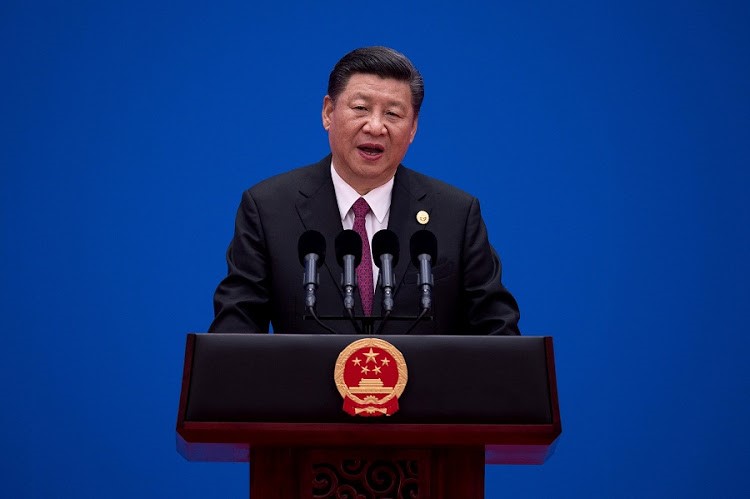Dr Odongo Kodongo’s December 7 article on One Belt One Road and its developmental effects on Africa is an informative piece that highlights many of the challenges faced by African states as they engage with China.
Kodongo argues rightfully that Chinese engagement is largely responsive to domestic economic imperatives, including the need to find productive investments for foreign exchange reserves, and offload excess material capacity. Moreover, he correctly states that the Chinese government has historically had few qualms striking deals with authoritarian states and that Chinese loan contracts generally require that a high percentage of inputs and material are imported from China.
However, I would argue that the article pushes certain narratives and misconceptions that are not borne out in the academic literature on Chinese-African relations.
Foremost among these is the notion that China is engaging in what has been termed “debt-trap diplomacy” (essentially amounting to predatory loan practices). As Kenyan economist Anzetse Were (2018) notes, the idea that African countries are being lured into accepting unsustainable debts by the Chinese government as part of a geopolitical plot to secure strategic assets, takes away from the agency of, and infantilises African governments.
Moreover, research by Corkin (2016), Carmody and Kragelund (2016), and Phillips (2018) has found that African leaders are actually quite adept at using their links with China to meet their goals. What those goals may be is a different question, however, and that brings us back to Were’s other point: the debt-trap narrative can absolve African states of their responsibility to use Chinese financing in a manner conducive to good governance and development.
Chinese engagement with the continent represents a significant opportunity for much-needed financing, technology transfer, and development
Additionally, although the Hambantota port in Sri Lanka is often brought up as a worst-case scenario for Belt and Road projects, it is far from a symptomatic example. Indeed, a recent China Africa Research Initiative (2018) paper found that while a number of countries have borrowed substantial amounts from Chinese banks, “Chinese loans are not currently a major contributor to debt distress in Africa”. That is, of course, not to suggest that countries such as Djibouti, Zambia, and the Democratic Republic of Congo (DRC), where Chinese loans are a significant percentage of their total debts, should continue borrowing at unsustainable rates; but rather suggests there is more to the debt picture than is often presented.
The article similarly pushes the narrative that Chinese financing is tied to the use of Chinese labour. However, studies by Lee (2014), Kernen and Lam (2014), Wissenbach and Wang (2017), and others, have found that Chinese firms generally hire local labour for construction projects or as everyday staff. For instance, surveys indicate that for the Kenyan standard gauge railway, 78% of full-time construction employees were Kenyan, as were 95% of part-time workers.
Furthermore, studies of Chinese construction firms in Angola, Tanzania, Sierra Leone and Zambia found that it is commonplace for these firms to employ a workforce in which up to 80% comprises locals. There are certainly debates to be had about the hiring of locals into managerial positions, as studies show that this is not done as often as one would hope, but the idea that Chinese financing equates to Chinese labour being brought over in large numbers does not reflect the realities of Chinese-African engagement.
It is true, as Kodongo (and my own research in SA) suggests, that Chinese projects and financing are generally opaque in nature, but in the end it is up to African states’ civil societies to demand transparency, and the proper use of funds as, after all, they are the ones who will be paying the bill. Yet it is also important to note that the vast majority of large-scale projects, whether they are financed by Chinese or Western institutions, face setbacks and cost over-runs (up to 90% and 50%, respectively, according to research by Flyvbjerg (2014)) and that the positive economic effects of large-scale infrastructure projects may not be felt for a decade or more.
Additionally, as per my own research, aspects such as labor and local content requirements are generally negotiated on a per-project basis and should be at the top of the list for African governments negotiating with their Chinese counterparts.
Infrastructure financing gap
In my opinion, Chinese engagement with the continent represents a significant opportunity for much-needed financing, technology transfer, and development. As per the African Development Bank (2018), Africa has a $68bn to $108bn infrastructure financing gap that must be addressed. Moreover, African states can leverage China’s attempt to move up the manufacturing value chain to kick-start their own industrialization initiatives.
In 20 years, we may be looking back at Ethiopia’s special economic zones (SEZ) and wondering why others didn’t attempt similar programmes (though, of course, without backwards links they may not have the desired effects). Similarly, African states would be well advised to attract private Chinese enterprise as opposed to limiting themselves to state-owned firms, as the lessons learned by Chinese firms could help incubate the continent’s small- and medium-sized enterprises (SMEs).
This brings me to Kodongo’s conclusion, which I wholeheartedly agree with. Developing countries should scrutinize every word in a Chinese-backed project or loan — but not because China has worse intentions than other powers engaging with African states, but rather because that’s what good governance principles dictate. In SA, Chinese projects, such as the metallurgical complex in the Musina Makhado SEZ and the BAIC automobile factory, should be observed carefully, but they should also be seen as a significant opportunity for the country.

